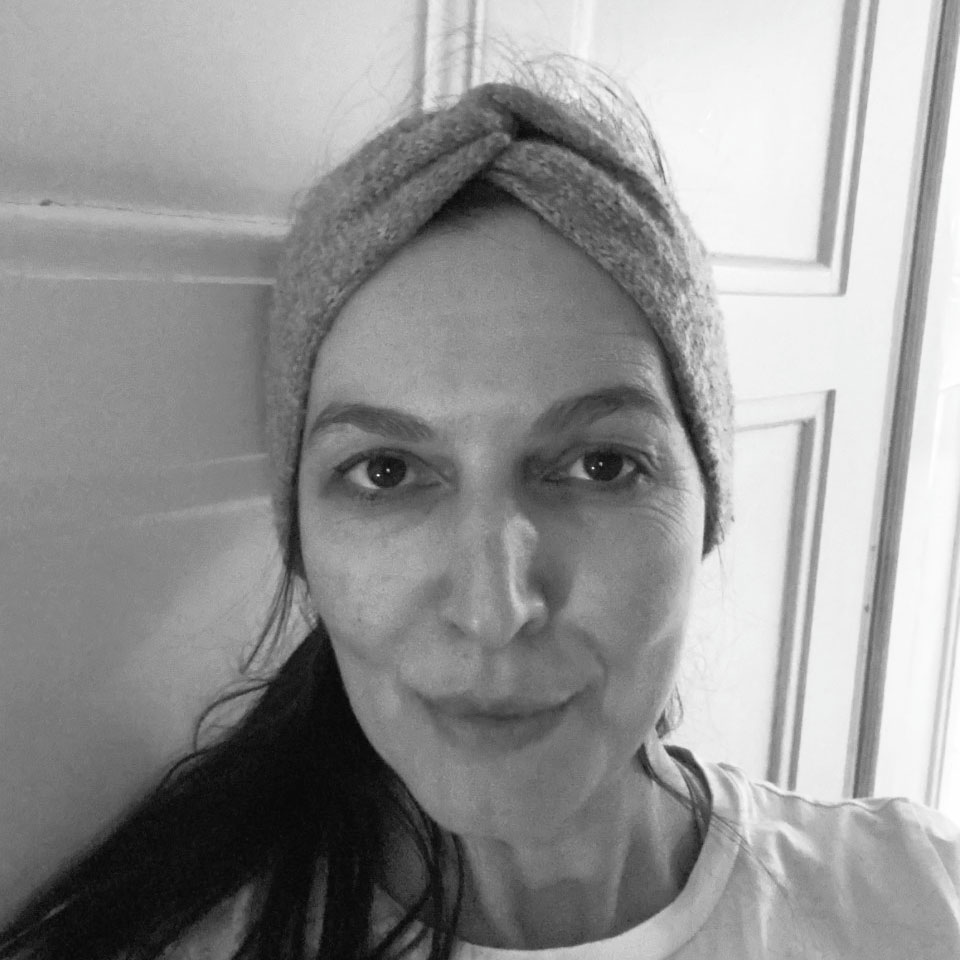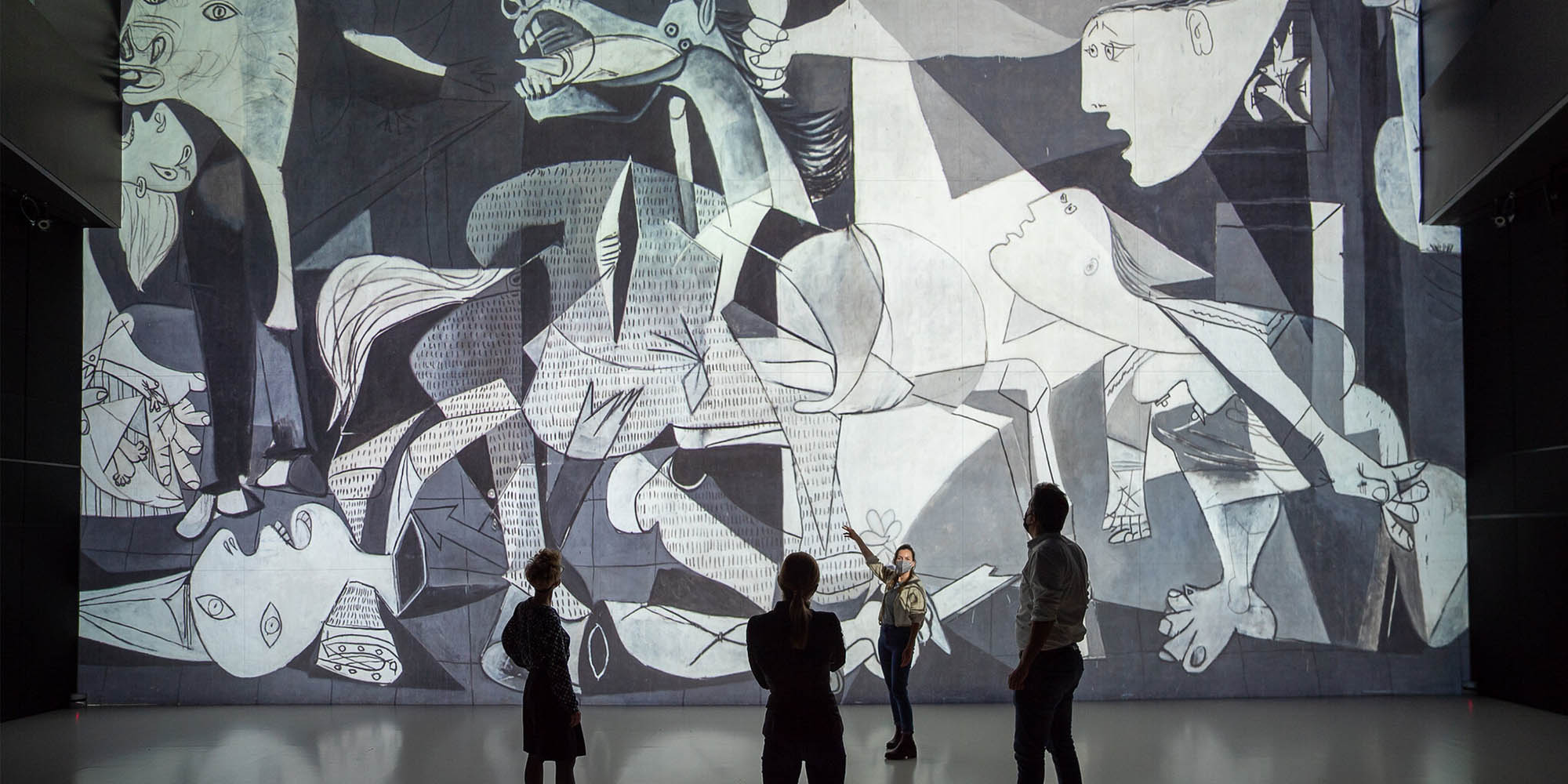The Ars Electronica Festival is getting closer and closer, and the Festival program is already set. Perhaps you’ve already gotten an overview and wondered what Picasso, an outstanding modernist artist, is doing at the Ars Electronica Center. And what the Reina Sofia Museum in Madrid has contributed to locate Picasso in the Deep Space 8K. Only Michaela Wimplinger, who has already organized several gigapixel projects in Deep Space 8K with external partners, can answer these and other questions for us. Let’s track down the Picasso mystery in the Deep Space 8K together!
How did the cooperation with the Reina Sofia Museum in Spain come about?
Michaela Wimplinger: The cooperation has been established on the one hand due to the positive response and the great quality of the gigapixel images already shown, such as those of Bruegel de Elder, Van Eyck and Raphael; on the other hand, due to the ongoing and good cooperation talks with the open-minded Spanish embassy in Vienna. After various discussions, it was decided to approach the renowned Reina Sofia Museum in Madrid. This encouraged me, after a conversation with the motivated deputy director of this great institution, to try a project within the framework of the festival. She was interested from the beginning to realize a so-called digitization cooperation project
What does the artwork tell us about the artist Picasso? And why was his work chosen for this year’s festival?
Michaela Wimplinger: Guernica is one of the most famous works by Pablo Picasso. In January of 1937 Picasso was commissioned by the legitimate government of the Republic to create a large-scale painting for the Spanish pavilion at the World’s Fair in Paris, which was held that summer. The work was created in 1937 in response to the destruction of the Spanish city of Guernica on April 26th. On July 12, 1937, the painting was presented for the first time in Paris at the World’s Fair. Today it is housed in the Museo Reina Sofia in Madrid, along with an extensive collection of sketches. Especially in these special times, around the pandemic, we decided to make a statement and present the “Democracy Work” by Picasso, especially to convey the importance of unity in our society. Moreover, in these times it is not possible for everyone to make trips or visit such art institutions. This has encouraged us to be able to present such an important work of art to the general public – using the technology of the Deep Space 8K. Particularly, the knowledge transfer from the expert from the Museo Reina Sofia, which opened the exhibition “RETHINKING GUERNICA” only this year.

What makes these high-resolution images so special?
Michaela Wimplinger: This impressive, visual representation of a gigapixel photo in the Deep Space 8K lets us see things in an inconceivably detailed resolution that we cannot imagine in this form with the naked eye. Combined with the unique resolution in Deep Space 8K, we can view these detailed images that we have never seen before in this form. Deep Space 8K is the space in which these developed, high-resolution photos can be displayed particularly well. The curator of the Picasso exhibition at the Reina Sofía Museum, Ms. Olga Sevillano, will provide insights into the artist’s craft and techniques during the Ars Electronica Festival. This form of presentation can also be very well perceived in a stream and is thus also aimed at the general public. Among other things, one of Ars Electronica’s priorities is to stream this content. Projects like this can only be created collectively.
What are further ideas with the cooperation partners?
Michaela Wimplinger: Ars Electronica would very much like to continue these collaborations with cultural institutions and embassies as well as with the international museum community, and to realize joint projects in the fields of: art history, architecture and design as opportunities arise. In addition, programs are already being created that include a female focus.
This is to address an international discourse and also to give with these programs the dimensions of gender equality in art history. Traditional roles and values in art history are to be addressed. The aim is to integrate these formats into extracurricular measures, among others.
The entire Ars Electronica team would like to express its warmest thanks to the Director of the Reina Sofia Museum in Madrid, Ms. Mabel Tapia and her staff, as well as to the Ambassador of the Kingdom of Spain, Ms. Cristina Fraile Jimenez de Munana and her team for this wonderful collaboration and opportunity to realize the “Rethinking GUERNICA” project in the Ars Electronica Deep Space 8K.

Michaela Wimplinger has been assistant to the Artistic Director of Ars Electronica, Gerfried Stocker, since 2006. Since 2017, she has also been in charge of special projects in the external as well as international environment and organizes international collaborations in the field of art and culture. Together with the Women’s Office of the City of Linz, she develops projects around the Marianne von Willemer Prize for Digital Media. She also curates exhibitions for the Ars Electronica Center and for “hosted by Ars Electronica” at Bildraum 07 in Vienna. She has been a jury member of the IRIS Prize of the City of Linz since 2015, and has been working on gender and diversity programs for Ars Electronica and in the Equality Network of the City of Linz Group of Companies since 2014.
